 |
| Breadline Sculpture by PublicDomainPictures at https://pixabay.com/photos/sculpture-art-breadline-bronze-18198/ |
This world history resource focuses on years of crisis,
including The Great Depression, in the years 1919 to 1939
and includes quiz questions and answers
and video links to related topics.
I utilized World History: Patterns of Interaction (Holt McDougal) for our world history textbook. It has multiple options for different learning styles and covers a wide array of information.
This quiz accompanies Chapter 31: pages 894-921.
Directions for the quiz:
- Scroll down and click on the thumbnail to enlarge to full screen.
- Click on the graphic to advance to the next screen.
- Choose an answer for each question.
- Compare your answers with those provided.
log in to Kahoot! and search for Week 31 World History by Katrena.
- Albert Einstein
- Sigmund Freud
- Crash Course: Existentialism
- Disease, War, & the Lost Generation
- Crash Course: Dada, Surrealism, & Symbolism
- What is Jazz
- Charles Lindbergh
- Charlie Chaplin
- Weimar Republic
- Black Tuesday Stock Market Crash
- Crash Course: Great Depression
- Crash Course: New Deal
- Fascism & Mussolini
- How did Hitler Rise to Power
- Isolationism
- Dorothea Lange
Thanks for visiting my Student Survive 2 Thrive blog.
Navigate my blog easily through my site map, topics
tabs on the right, or via my search bar.
Here are a few of my articles you may also find helpful this week:
- Week 31 Visual Arts: Portraits
- Week 31 Ninth Grade ELA Assignments
- Mt. Jefferson State Natural Area - Beautiful View!
 |
| World History Week 31 Years of Crisis: 1919-1939 |
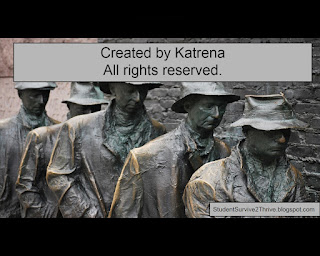 |
| Created by Katrena. All rights reserved. |
 |
| The correct answer is Albert Einstein. |
 |
| The correct answer is Sigmund Freud. |
 |
| The correct answer is existentialism. |
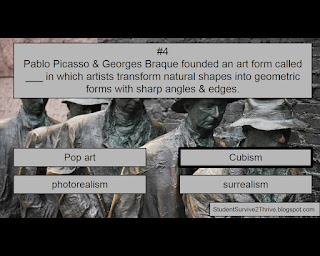 |
| The correct answer is Cubism. |
 |
| What musical style led by African Americans emerged in the U.S., beginning in New Orleans, Memphis, & Chicago, after World War I? Answer choices include: baroque, patriotic, hip hop, jazz |
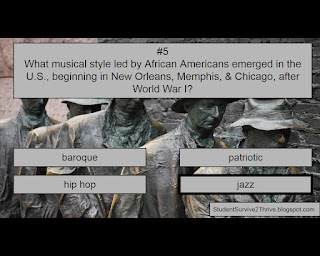 |
| The correct answer is jazz. |
 |
| The correct answer is: The number of women in medicine, education, & journalism decreased. |
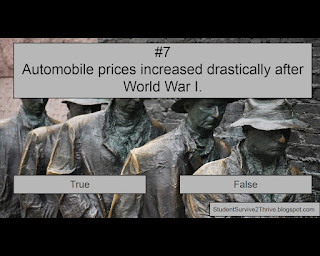 |
| Automobile prices increased drastically after World War I. Answer choices include: true, false |
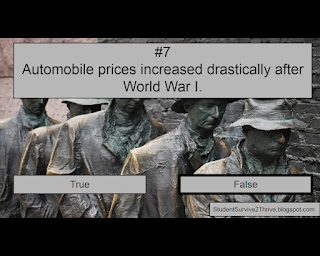 |
| The correct answer is false. |
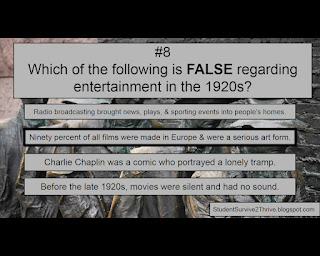 |
| The correct answer is: Ninety percent of all films were made in Europe & were a serious art form. |
 |
| After World War I, Germany’s currency, called the mark, was worth far less than it was worth before the war. Answer choices include: true, false |
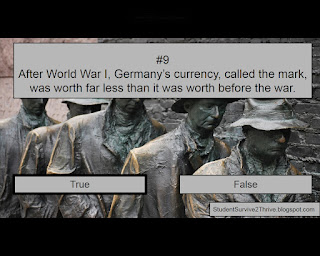 |
| The correct answer is true. |
 |
| During the Great Depression and specifically in 1933, what percent of all American workers were unemployed? Answer choices include: 5%, 10%, 25%, 50% |
 |
| The correct answer is 25%. |
 |
| Franklin D. Roosevelt began a governmental program called the ___ to help the country recover from the Great Depression. Answer choices include: Raw Deal, Real Deal, Sealed Deal, New Deal |
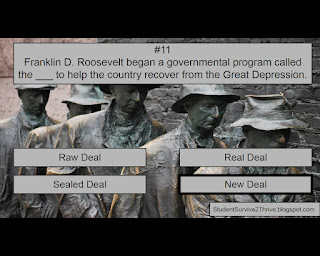 |
| The correct answer is New Deal. |
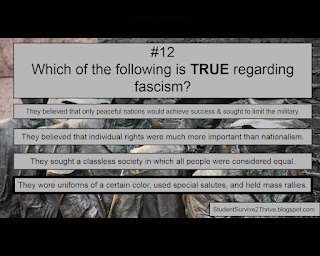 |
| The correct answer is: They wore uniforms of a certain color, used special salutes, and held mass rallies. |
 |
| Which primary group of people became the scapegoat (those who were blamed for all of Germany’s troubles) for Nazi ideology? Answer choices include: Jews, Schutzstaffels, Aryans, Atheists |
 |
| The correct answer is Jews. |
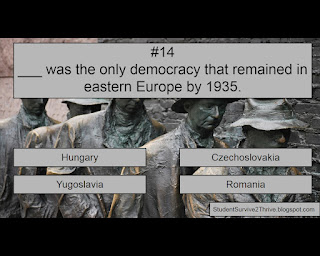 |
| ___ was the only democracy that remained in eastern Europe by 1935. Answer choices include: Hungary, Czechoslovakia, Yugoslavia, Romania |
 |
| The correct answer is Czechoslovakia. |
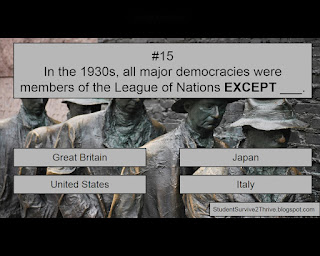 |
| In the 1930s, all major democracies were members of the League of Nations EXCEPT ___. Answer choices include: Great Britain, Japan, United States, Italy |
 |
| The correct answer is United States. |
 |
| Italy invaded ___ in 1935 in order to avenge a previous defeat in that country. Answer choices include: Spain, Ethiopia, Equador, Sudan |
 |
| The correct answer is Ethiopia. |
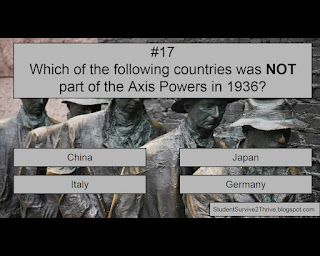 |
| Which of the following countries was NOT part of the Axis Powers in 1936? Answer choices include: China, Japan, Italy, Germany |
 |
| The correct answer is China. |
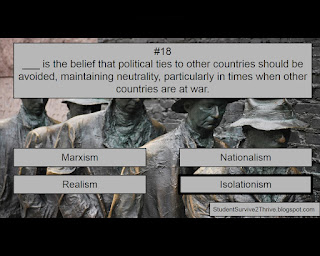 |
| The correct answer is isolationism. |
 |
| Britain & France stepped in to help countries that were being oppressed by Hitler and Mussolini numerous times in the early 1900s. Answer choices are: true, false |
 |
| The correct answer is false. |
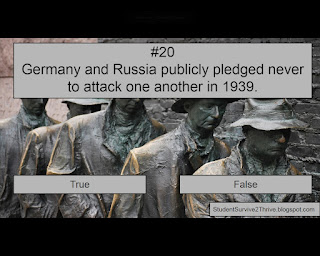 |
| Germany and Russia publicly pledged never to attack one another in 1939. Answer choices include: true, false |
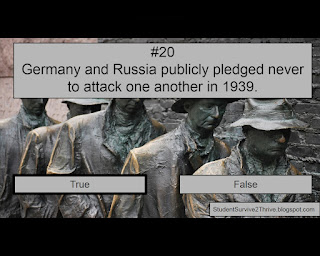 |
| The correct answer is true. |
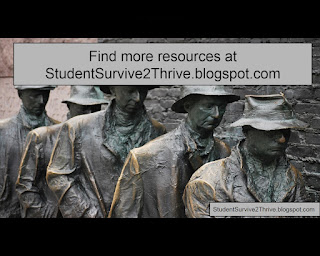 |
| Find more resources at StudentSurvive2Thrive.blogspot.com |
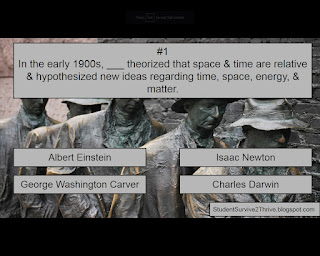

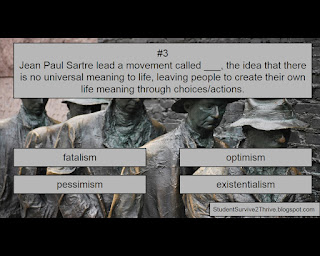
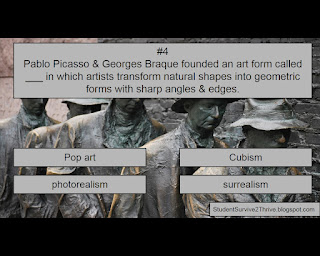



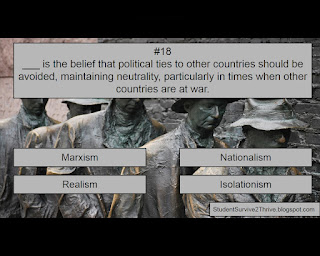
No comments:
Post a Comment
Thanks for reading my article and sending your comment! Please note that I do not place links to other web sites on this blog.
Note: Only a member of this blog may post a comment.